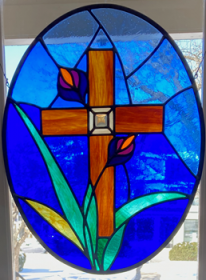Blogging Guidelines

Welcome to the Old Sloop Website BLOG GUIDE!
These guidelines are intended to assist anyone interested in creating a well-thought-out and effective blog post (short article) to be posted on the website page entitled Scuttlebutt–a nautical term meaning the barrel of drinking water on a ship, where sailors would gather and talk! The blog is our “virtual drinking fountain”, where we can share unique reflections and insights with each other, as well as with readers in the broader community.
See below, both the Quick Guide and the full Detailed Guidelines.
For examples and inspiration, check out the varied blog posts already posted on the website!
Don’t hesitate to contact a member of the website team with further questions.
We look forward to your addition to the Old Sloop Scuttlebutt!
Gratefully,
Your Website Management Team
Here is a QUICKVIEW of instructions for blog writers
Please consult the full-length below instructions for more detail.
- CHOOSE an INTERESTING/INSPIRING TOPIC you have experienced or reflected upon. read more
- STRUCTURE your ARTICLE with your reader in mind. read more
Plan a succinct Introduction, Beginning, Middle and End.
Include Title, Name, and Date.
Length of Blog Article. Suggested 500-1000 words. 1-3 photos - FOLLOW SUGGESTIONS for LAYOUT – NUMBERING, SPACING, etc. read more
- USE PHOTOS/IMAGES. read more
- EMBED RELEVANT VIDEOS and PODCASTS to enhance reader engagement, if desired. read more
- PROVIDE a SYNOPSIS & FEATURED PHOTO for HOMEPAGE. read more
When your blog post is complete, please create a one-sentence synopsis of the main theme of your articIe.
Include a coordinating photo of your own, or from the website gallery of photos - REVIEW your POST BEFORE SUBMITTING to Website Management Committee. read more
Length (500-1000 words)
Spellcheck
References
Photos (1-3) - SUBMIT YOUR POST. read more
Submit your completed blog post to
The website committee’s goal is to review, edit if necessary, and post within 3 days.
1. CHOOSE AN INTERESTING/INSPIRING TOPIC you have experienced or reflected upon.
An important rule to keep in mind is choose a topic that you are passionate about. The more engaged you are with your subject, the easier it will be to convey your idea to the reader. Some popular topics that would apply to our audience include our church, religion, food, travel, health and fitness, your spiritual journey, photography, art, personal stories, interesting events, music and books.
This does not mean that other topics would be inappropriate. However, promoting a business or political agenda would NOT be suitable topics for the church website. Any content deemed to be hurtful or discriminatory will also not be approved for posting.
2. STRUCTURE your ARTICLE with your reader in mind.
- Plan a Succinct Introduction, Beginning, Middle and End.
It’s always best to think through your article before a word is put to paper. As you plan your article, consider that every good article needs a succinct Introduction, Beginning, Middle and End.
A brief introduction will clarify a few important things:
● Why your topic is of interest.
● To whom and/or what the theme of your article applies.
● What you’ll be covering [i.e., “In this post you’ll____, I’ll define___, I’ll show___”] - Title, Name, Date.
Be sure to include a compelling title for your blog post.
Under the title, insert your name as the author. Under that, the date. - Length of Blog Article.
“Most sentences can be cut in half.”—Josh Spector
Keep sentences and paragraphs short.
A blog post doesn’t need huge blocks of text to communicate depth.
Some of the best blog posts are only a few hundred words.
On the other hand, many effective posts range to 2000 words.
We recommend keeping your sentences between 2-12 words and paragraphs from 2-4 short sentences.
Everything comes back to the readers. What do you think they would be interested in?
And what is the most efficient way to relate to them?
3. FOLLOW SUGGESTIONS for LAYOUT – NUMBERING, SPACING, etc.
Developing visually scannable content doesn’t mean draining it of its complexity. Instead, it means using the available tools to make your article visually attractive.
Bullets and numbering will help readers to quickly identify key points. Use bullet points when the order of a list doesn’t matter so much. Use numbered lists either when the order is important or when the list is longer than five items.
Formatting your text to emphasize what’s important can help readers identify with your main theme. The use of bold, italics, header tags and block quotes are ways to achieve this. Your use of these tools will be honored to the extent they integrate properly with the website formatting.
Additional whitespace has been shown to increase reading speed and comprehension. It’s also been said that this helps readers get more from your writing by giving them less.
Any way you can describe your desired layout to the blog editor is acceptable. If you are comfortable with Microsoft Word, you can lay out your article as a Word document. Insert images and links where you would like them to appear. Show where you would like videos or podcasts to appear by inserting placeholder graphical elements or just with words.
However, it’s important to note here that the Website Management Committee reviews formatting with an eye on how an article renders on small devices. Not all formatting in Microsoft Word is ideal for a website. A member of the Website Management Committee will contact you if any changes to your submission are necessary.
4. USE PHOTOS/IMAGES.
Scrolling through short paragraphs with photos helps to keep readers active and engaged.
We suggest using 2–3 images in each blog post.
Authors may use their own photos or selections from the website gallery of photos, which will be periodically updated.
You will need one “featured image” to be placed at the top of the blog post. A “thumbnail” of the featured image will appear in the “Scuttlebutt–Parishioners’ Blog” section of the Website Home Page, while that post is actively displayed. The two most recent blog posts are displayed.
TIPS for effective photo use:
First ask, does this image serve a purpose? Is it relevant to the theme of the blog article? If so, use it. Otherwise, it’s simply taking up space!
When appropriate, create your own images such as photos, screenshots, drawings, or other. Ensure that images are high quality. Poor images may give the impression of weak content.
The featured image should be horizontal format with a 16:9 aspect ratio (e.g., 480 pixels by 270 pixels, or nearly twice as wide as high).
There are two ways to make use of the gallery of photos:
- If you have laid out your article in Microsoft Word, you can download the image and insert it into the document. Select the image you want, click the three dots in the upper right, click Download, and specify a location for the image on your computer. Then you can insert the image.
- You can specify the image and describe to the blog editor where you would like it to go. To specify an image, select the image you want, click the letter “i” in a circle in the upper right, and make note of the date, time, and file name (e.g., Katie-photo.jpeg).
5. EMBED RELEVANT VIDEOS and PODCASTS to enhance reader engagement
Blog readers typically have high expectations, looking for interesting content and enjoyable topics, educational articles and stories of personal experience. Relevant videos and podcasts embedded in an article can greatly enhance the effectiveness of your blog post, and help to interest readers in other aspects of the website.
6. PROVIDE a SYNOPSIS & FEATURED PHOTO for HOMEPAGE.
- Create a one-sentence synopsis of the main theme of your article
- Include a featured image. See section 4 for more about photo use.
The synopsis and featured image will appear on the homepage, with the article title and a “read more” link to the full article on the “Scuttlebutt” page. (See how this works on the home page)
7. REVIEW your POST BEFORE SUBMITTING to Website Management Committee.
As you wrap up your amazing new blog post, read it through.
Are you satisfied that your key takeaway will be clear to your readers, and possibly even interest them in another area of the website?
Have you checked the technical details:
- Did you properly CITE and BACKLINK your sources, if this applies to your content?
- Did you SPELLCHECK and PROOFREAD?
- Are there 2–3 IMAGES?
- Is the post 500–1000 WORDS?
8. SUBMIT YOUR POST.
Your article will be forwarded to the Website Management Committee for review.
It is the committee’s goal to have blog articles reviewed, approved and posted within three days from the date of receipt.
If there is a concern regarding the content or formatting, or if a blog simply needs further proofing, it will be discussed with or returned to the author. Final editing will be done by the Website Management Committee prior to posting.
If you are a member of a committee and have any questions, please direct them to the committee member representing your group on the Website Management Committee. Otherwise, you can send your inquiry to .



